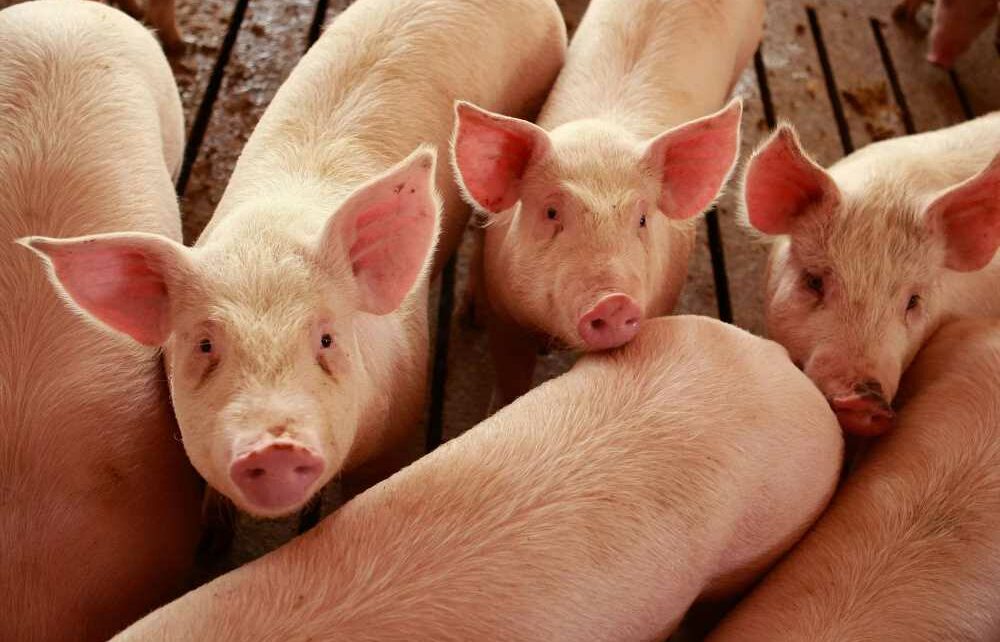A PERSON in the UK was diagnosed with a never before seen strain of swine flu, dubbed H1N2.
It's the first human case of the virus found in the UK, the UK Health Security Agency (UKHSA) said.

The Brit only suffered mild symptoms and has since recovered from the illness, while all their contacts are now being traced by the health watchdog.
The UKHSA has said it's now working to "assess the risk to human health" and "reduce potential spread".
From how it spreads, to the symptoms it causes and whether we could see more cases of it – here's everything you need to know about the new swine flu strain H1N2.
What is the virus?
The virus is called influenza A(H1N2)v.
Read more on swine flu
 FLU FEARS
FLU FEARS
First human case of new swine flu strain found in UK as medics try to stop spread
 FLU FEARS
FLU FEARS
What is swine flu and how many deaths has it caused?
According to the UKHSA, it's similar to flu viruses currently circulating in pigs in the UK.
But this is the first time this flu strain has been spotted in a human in the UK.
How was the case spotted?
The case was picked up during routine national flu surveillance carried out by the UKHSA and the Royal College of General Practitioners (RCGP), after a person based in North Yorkshire visited their GP with breathing problems.
The influenza A(H1N2)v virus was detected using a PCR test and genome sequencing – a laboratory procedure that identifies the unique DNA fingerprint of organisms.
Most read in Health
 LIFE-SAVER
LIFE-SAVER
First-of-its-kind blood test ‘slashes heart attacks and deaths in A&E patients’
 HANDS, FACE, SPACE
HANDS, FACE, SPACE
China brings back masks & social distancing over mystery outbreak
 CHILLING
CHILLING
The horrifying ways cold weather affects our bodies – from ‘winter penis’ to clots
 BUG BEAR
BUG BEAR
‘Brutal’ virus that ‘lasts for weeks’ and is ‘worse than winter bugs’ sweeps UK
Because it was spotted during routine flu surveillance, it's unlikely that this is the only case in the UK.
How did the patient get the virus?
It's not clear how the individual – who experienced a mild illness and has now fully recovered – got the virus in the first place.
They aren't thought to have had close contact with pigs.
As the UKHSA put it: "The source of their infection has not yet been ascertained and remains under investigation."
Is this the first time this strain has been seen?
H1N1, H1N2 and H3N2 are major subtypes of swine flu A viruses in pigs and occasionally infect humans.
This is the first time H1N2 has been reported in a human in the UK, but it has been seen in other parts of the world.
A total of 50 human cases of H1N2 have been reported globally since 2005.
However, none of these 50 cases are genetically related to the strain seen in the UK.
Paul Hunter, Professor in Medicine at the University of East Anglia, said H1N2 "has been reported sporadically over recent decades from several different countries but has yet to cause a major outbreak in humans.
“In 2022, seven cases of human infection with influenza A(H1N2) were reported globally, with one case in Europe, in the Netherlands.
While one of these seven cases was hospitalised, Professor Hunter said the others only experienced mild illness and respiratory symptoms.
How does swine flu spread?
Swine can be passed from diseased pigs to humans.
Professor Dan Horton, Professor of Veterinary Virology and Associate Dean of Research and Innovation at the University of Surrey, said "the detection of a virus normally found in pigs in a human is not a complete surprise", as "we already know that some viruses that infect pigs can also infect humans, and vice-versa".
According to Professor Hunter: “Some, but not all, cases of influenza H1N2 had a history of contact with pigs."
But he added that "person to person transmission does not appear to be very efficient and sustained person to person transmission has not been reported so far".
Chief Veterinary Officer, Christine Middlemiss, said: "We know that some diseases of animals can be transferred to humans – which is why high standards of animal health, welfare and biosecurity are so important."
What measures have been put in place?
Meera Chand, Incident Director at UKHSA, said the agency is "working rapidly to trace close contacts and reduce any potential spread".
She added: "In accordance with established protocols, investigations are underway to learn how the individual acquired the infection and to assess whether there are any further associated cases."
Christine said "specialist veterinary and scientific knowledge" was being provided to support the UKHSA investigation.
"Pig keepers must also report any suspicion of swine flu in their herds to their local vet immediately," she went on.
Professor Horton said: “The next stage is the most important, to determine whether the patient did acquire the infection from pigs, and whether it has spread to other people.
"There is no evidence of human to human spread currently."
Will there be more cases?
Professor Ian Jones, Professor of Virology at the University of Reading, said that not every new strain detected will be a "threat".
"It's very unlikely the single case of H1N2 swine flu represents anything more than has been seen in the past," he explained.
"We should remember that surveillance programmes can discover infections that might never have been noticed based on case numbers or severity, so a level of reasoned tolerance has to be applied.
"Not every new agent is a threat.”
What does is have to do with the 2009 swine flu pandemic?
In 2009, there was a pandemic in humans caused by the virus strain H1N1, commonly referred to as ‘swine flu’.
"That virus contained genetic material from viruses that were circulating in pigs, birds and humans in the 1990s and 2000s," according to the UKHSA.
This strain is different from the viruses currently circulating in pigs, the agency added.
The H1N1 strain was first detected in April of that year in North America but quickly spread across the US and worldwide.
By the time the WHO declared it a pandemic in June 2009, it had spread to 74 countries and territories.
It killed 457 people in the UK. But the UKHSA said it now circulates in circulates in humans seasonally, is included in the flu jab, and is not referred to as 'swine flu'.
The WHO declared the pandemic was over in August 2010.
What symptoms does H1N2 cause?
So far, it seems the H1N2 strain causes mild illness and respiratory symptoms.
The UKHSA outlined symptoms caused by common respiratory infections. They include:
- a continuous cough
- a high temperature, fever or chills
- a loss of, or change in, your normal sense of taste or smell
- shortness of breath
- unexplained tiredness, lack of energy
- muscle aches or pains that are not due to exercise
- not wanting to eat or not feeling hungry
- a headache that is unusual or longer lasting than usual
- a sore throat, stuffy or runny nose
- diarrhoea, feeling sick or being sick
Meanwhile, the Great Ormond Street Hospital for Children said swine flu causes the following symptoms:
- a cough
- sore throat
- aching body
- headache
- feel chilly
- feel very tired
It added that children with the flu might also get diarrhoea and vomiting.
What should I do if I have symptoms?
Guidance for people with respiratory infection symptoms currently states that they should get plenty of rest and and drink water to keep hydrated.
Painkillers such as paracetamol can also help ease your symptoms.
But antibiotics won't do anything to relieve symptoms from viral respiratory infections or speed up your recovery.
You won't be able to tell if you have swine flu unless you have a PCR test.
Source: Read Full Article



